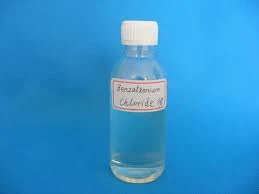Understanding Poly Aluminum Chloride and Its Applications in Water Treatment
What is Poly Aluminum Chloride?
Poly Aluminum Chloride (PAC) is a widely used chemical compound in numerous industries, most notably in water treatment, paper manufacturing, and food processing. It is a coagulant that is favored for its effectiveness in removing contaminants from water, making it an essential component in various purification processes.
Composition and Properties
PAC is a type of aluminum salt, composed of aluminum hydroxide and hydrochloric acid. It typically appears in a white, yellow, or brown granular form or as a liquid solution. Its chemical formula can vary but generally contains aluminum ions bonded to hydroxyl and chloride ions. The polymeric nature of PAC contributes to its high charge density, which is crucial for its coagulation capabilities.
One of the key properties of Poly Aluminum Chloride is its ability to operate effectively across a wide pH range. It is soluble in water and can produce a variety of ionic species that play a vital role in neutralizing particles in suspension. This property makes PAC suitable for treating both surface water and wastewater from various sources, including industrial facilities and municipal wastewater treatment plants.
Applications in Water Treatment
In the water treatment industry, PAC serves as a coagulant in the clarification process. When added to water that contains suspended solids, colloidal particles, and impurities, PAC works by destabilizing these particles, allowing them to clump together and form larger aggregates. This process is known as flocculation. The resulting flocs can then be more easily removed from the water through sedimentation or filtration.
PAC has several advantages over traditional coagulants such as alum (aluminum sulfate). It generally operates more efficiently at lower doses, which can lead to reduced sludge production. Additionally, PAC can work effectively in a broader range of pH conditions, making it versatile for various water types. Because of these benefits, many water treatment facilities have transitioned to using PAC, resulting in improved water quality and lower overall treatment costs.
what is poly aluminum chloride

Role in Paper Manufacturing
In the paper industry, Poly Aluminum Chloride plays a critical role in the production process. It is used as a retention agent, which helps in retaining fibers and fillers during the formation of paper. By improving retention, PAC minimizes raw material loss, enhances the brightness of the paper, and improves the overall quality of the final product. Furthermore, PAC supports the reduction of water usage in the papermaking process, which can lead to significant cost savings for manufacturers.
Food Processing Applications
PAC is also utilized in food processing, particularly as a clarifying agent. It aids in the clarification of juices, wines, and other beverages by removing suspended particles and ensuring a clear end product. When used in accordance with regulatory guidelines, PAC helps produce high-quality food and beverage products while adhering to safety standards.
Safety and Regulatory Aspects
While PAC is generally regarded as safe when used appropriately, it is essential to comply with regulatory guidelines to ensure its safe application. Before being used in water treatment or food processing, PAC must meet specific quality standards set by regulatory bodies such as the Environmental Protection Agency (EPA) and the Food and Drug Administration (FDA). It is crucial for industries to continually monitor their PAC usage to maintain compliance and protect public health.
Conclusion
Poly Aluminum Chloride is a versatile and effective coagulant that serves a crucial role in various industries, especially in water treatment, paper manufacturing, and food processing. Its ability to improve the clarity and quality of water while being cost-effective has made it a preferred choice among manufacturers and treatment facilities. As industries continue to prioritize environmental sustainability and efficiency, PAC is likely to maintain its significance in the coming years.
-
LK-319 Special Scale And Corrosion Inhibitor For Steel Plants: Advanced Solutions for Industrial Water SystemsNewsAug.22,2025
-
Flocculant Water Treatment: Essential Chemical Solutions for Purification ProcessesNewsAug.22,2025
-
Isothiazolinones: Versatile Microbial Control Agents for Industrial and Consumer ApplicationsNewsAug.22,2025
-
Scale Inhibitor: Key Solutions for Water System Scale PreventionNewsAug.22,2025
-
Organophosphonates: Versatile Scale Inhibitors for Industrial Water SystemsNewsAug.22,2025
-
Scale and Corrosion Inhibitor: Essential Chemical Solutions for Water System MaintenanceNewsAug.22,2025





